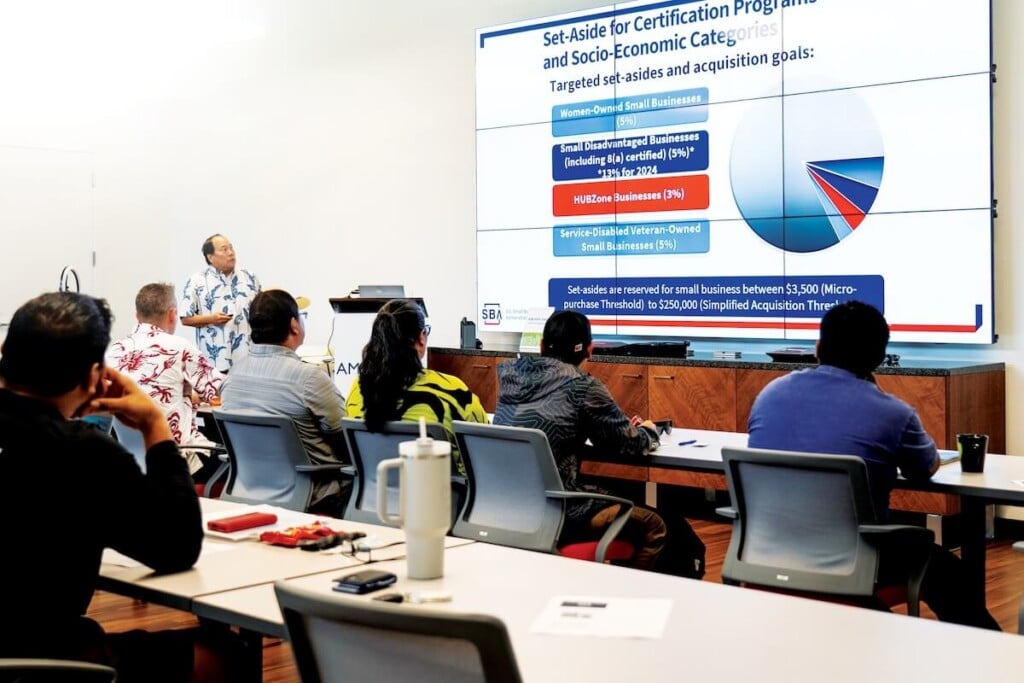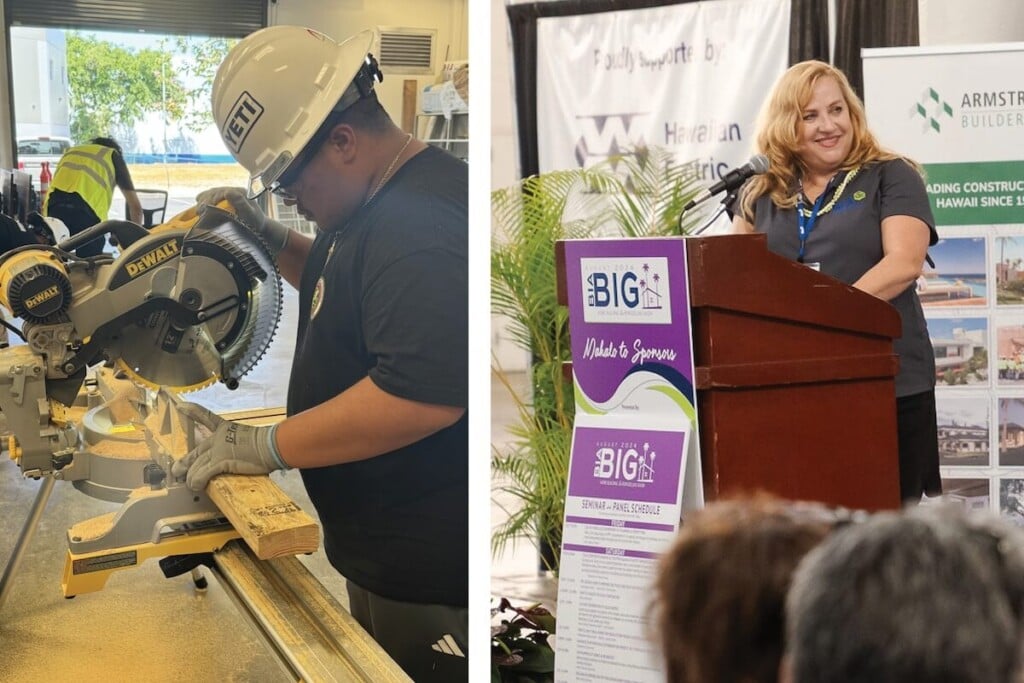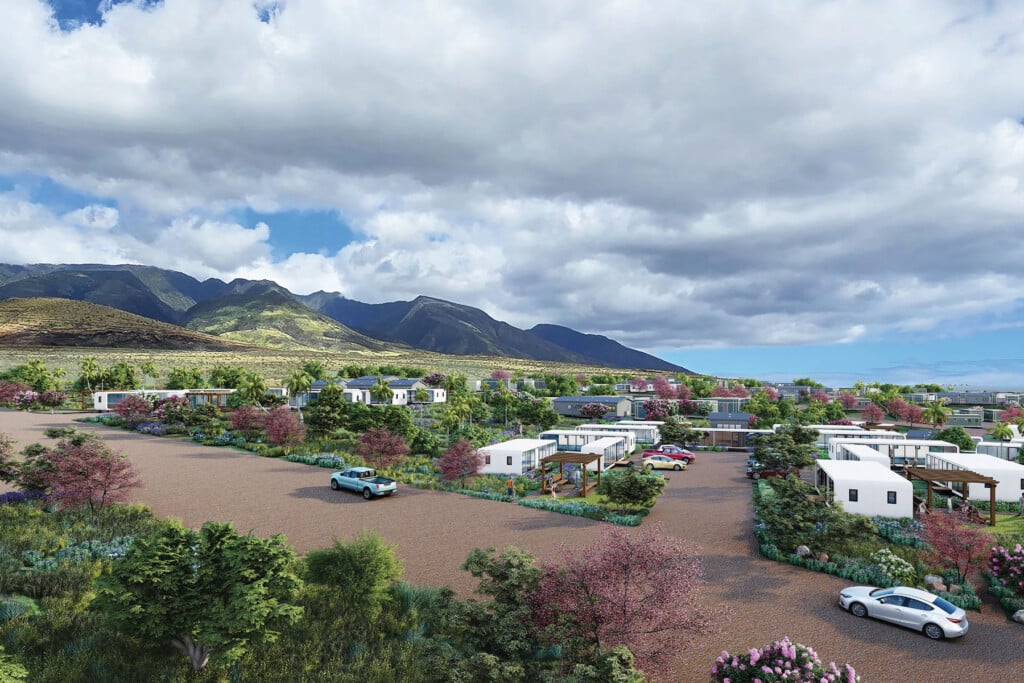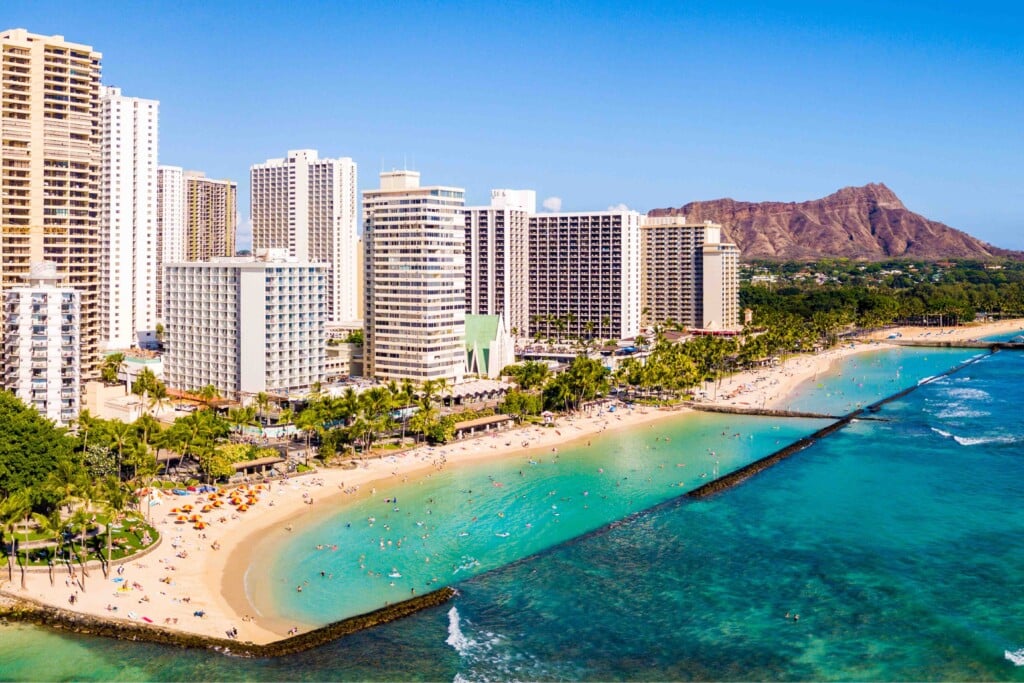Good Locations, Lots of Space, but Unused for Years and Years
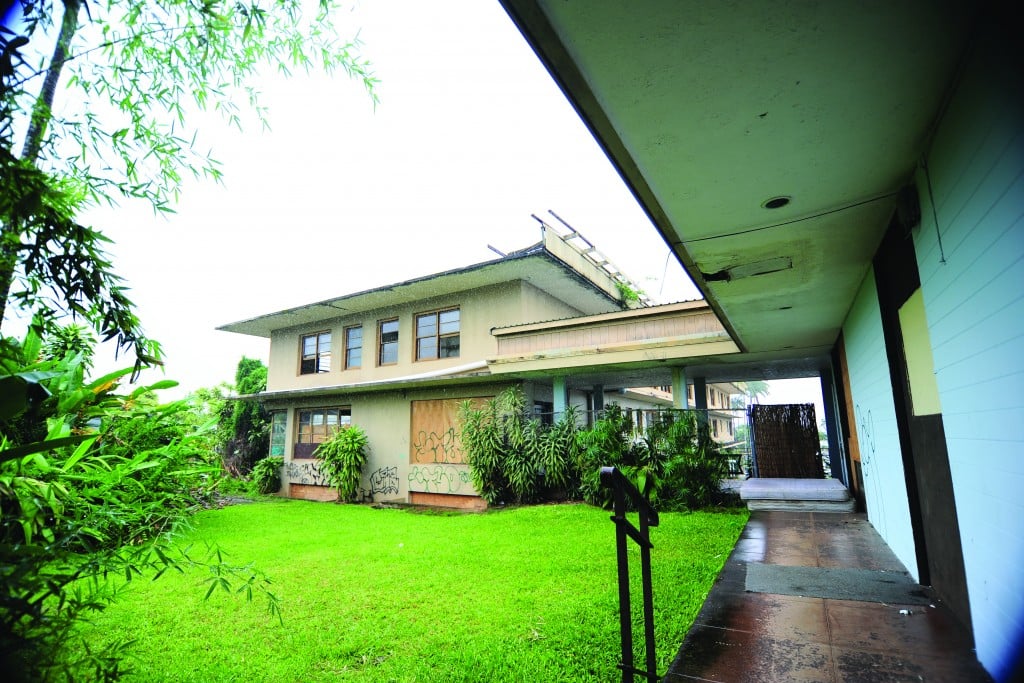
Each of these 10 vacant buildings has problems, whether termites, fumes, asbestos or just a lack of tenants. Some owners are moving forward with new plans, while others are still trying to figure out what to do.
While new buildings are being built all the time in Hawaii, some large commercial and government properties have sat unused for years or even decades in areas that are otherwise full of activity. Here’s a look at 10 prominent vacancies – buildings with unique pasts and varying plans for the future.
C.Q. YEE HOP & CO. LTD. WAREHOUSE
112 Nimitz Highway, Honolulu (Ewa of Maunakea Street)
Built in 1919, this brick building stands out from its surroundings – it’s even slightly offset compared to the grid pattern of the block’s other structures. Mike Chun, president of C.Q. Yee Hop & Co., said the building used to have a freezer on the ground floor and tenement apartments on the second and third stories.
The freezer cooled groceries before delivery to local stores and supermarkets, while the apartments housed immigrant workers in its early years. “When my grandfather built the building, he would bring immigrants from China and they would live up there,” Chun says.
By the early 1990s, interior termite damage and problems with the freezer forced the company to store food elsewhere and the apartments went vacant. Now, the building is used to store tools and low-value material as Chun decides what to do with it.
One challenge is figuring out how to renovate the building while preserving its historical value. Alan Downer, an administrator with the State Historic Preservation Division, says that often means minimizing changes to a building’s exterior. But, he adds, the structure can be remodeled – even added to – without disrupting its historic integrity. “It’s possible to design additions that don’t completely detract from the historic character of the building,” Downer says.
Chun says he’s considered some plans, such as adding a parking structure to the existing building, but those either wouldn’t comply with the preservation division’s requirements or wouldn’t be worth the investment. “I haven’t figured it out yet,” he says.
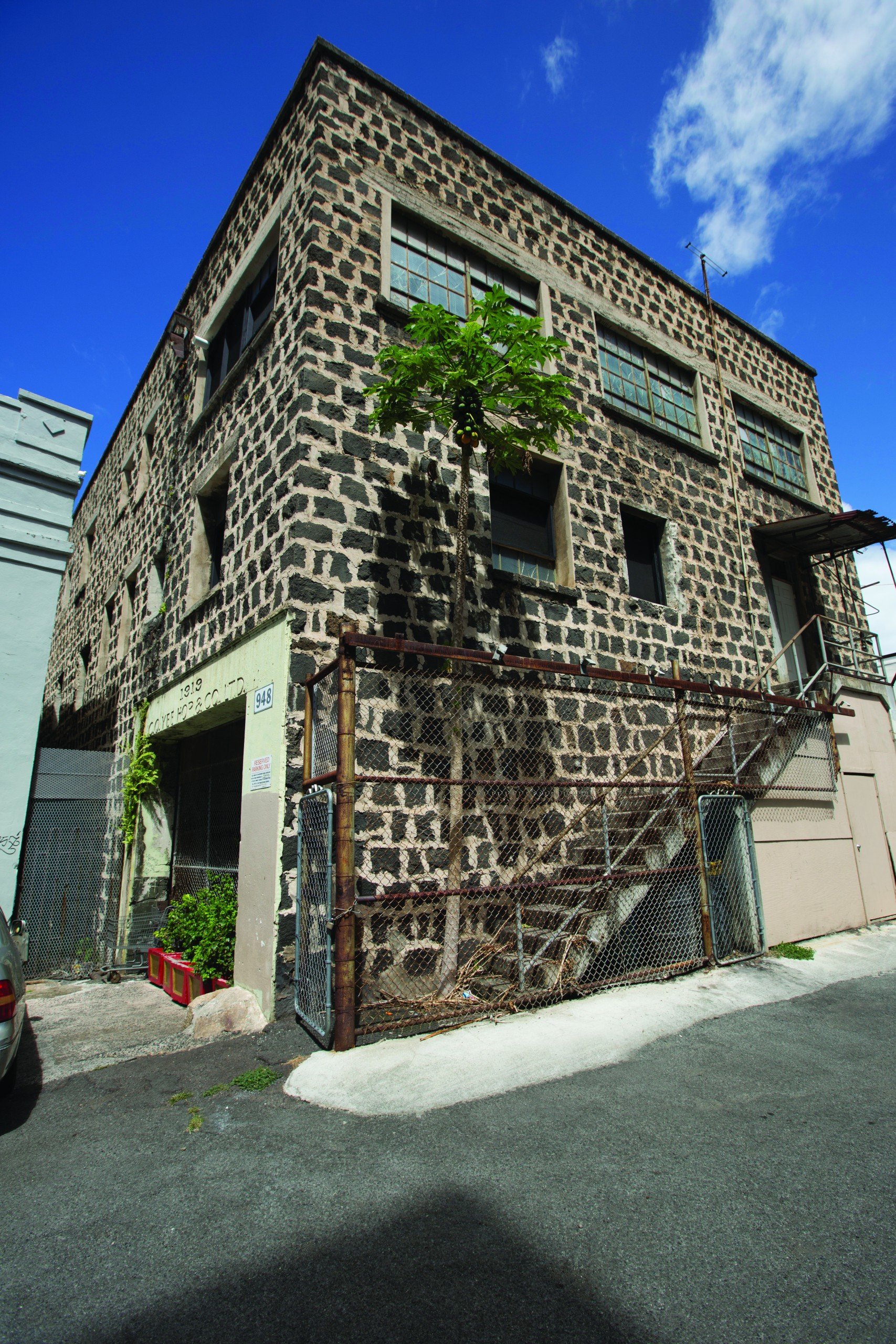
PHOTOGRAPHS BY DAVID CROXFORD
PRINCESS VICTORIA KAMAMALU BUILDING
250 S. King St., Honolulu (at Richards Street)
The State inherited a problem when it bought this property from the Hawaiian Trust Co. in 1968 for $2.5 million. Constructed in 1956, it contains fire-retardant asbestos in its structure, according to Robin Yahiku, the policy and planning analyst for the state Public Works Division. Before the state moved out in 2003, any repairs or interior renovations were “limited due to asbestos in the floors, walls and ceilings,” he says.
While many of the hazardous substances, including asbestos, were removed from the building in 2008, Yahiku says the state has been reviewing bids for a more complete overhaul since May and hopes to begin the renovation this fall. While the state meant to have the building back in service within a few years after it closed, problems finding enough state money to fund the repairs pushed the renovations back several times. As part of this year’s renovation, crews will replace the aging plumbing, ventilation, air-conditioning, electrical, telecommunications and elevator systems.
The goal, Yahiku says, is to have the building back in use by the summer of 2016. The planned tenants include divisions of the Department of Human Services and the Department of Health.
Deborah Ward, a public information specialist with the State Historic Preservation Division, says the division is working with an architect on the renovation plans, but doesn’t expect the work will change the building’s outside appearance. “The rehabilitation is on the inside only and no impact on external qualifications is expected,” she says.

QUEEN THEATER
3588 Waialae Ave., Honolulu (at Center Street)
This 1930s-era movie house has been in a holding pattern for years, says Nancy Wilcox, head of the Friends of Queen Theater. Since 2009, the group has been planning to restore the boarded-up building to its art deco glory so it can be used for concerts, movies and other events.
But Narciso Yu, the theater’s owner, has been less committed to restoring the building, she says. Although Wilcox says Yu and an associate who manages the property have discussed restoration for years, they haven’t been able to secure funding. “They talk about getting some investments from Japan, but they’ve been doing that for years,” she says. “We need more muscle than we can provide to budge the owner.”
Wilcox says she’s worked with architects, architecture historians and community members who have donated their time and talents to draft the plans for the theater and support its renovation. Even with that momentum, she points out, the final decision on what to do with the building rests with the owner, leaving the group’s hands tied.
Yu did not respond to multiple requests for comment, but Hawaii Business did talk to Michael Kratzke, Yu’s associate and the self-described property manager for the Queen. In an initial interview in May, Kratzke said Yu had plans underway for the property and told our writer to call back in a month for details.
His response when we called again in June? “If you could call me in one month, that would be great.” Multiple calls in August were not returned.
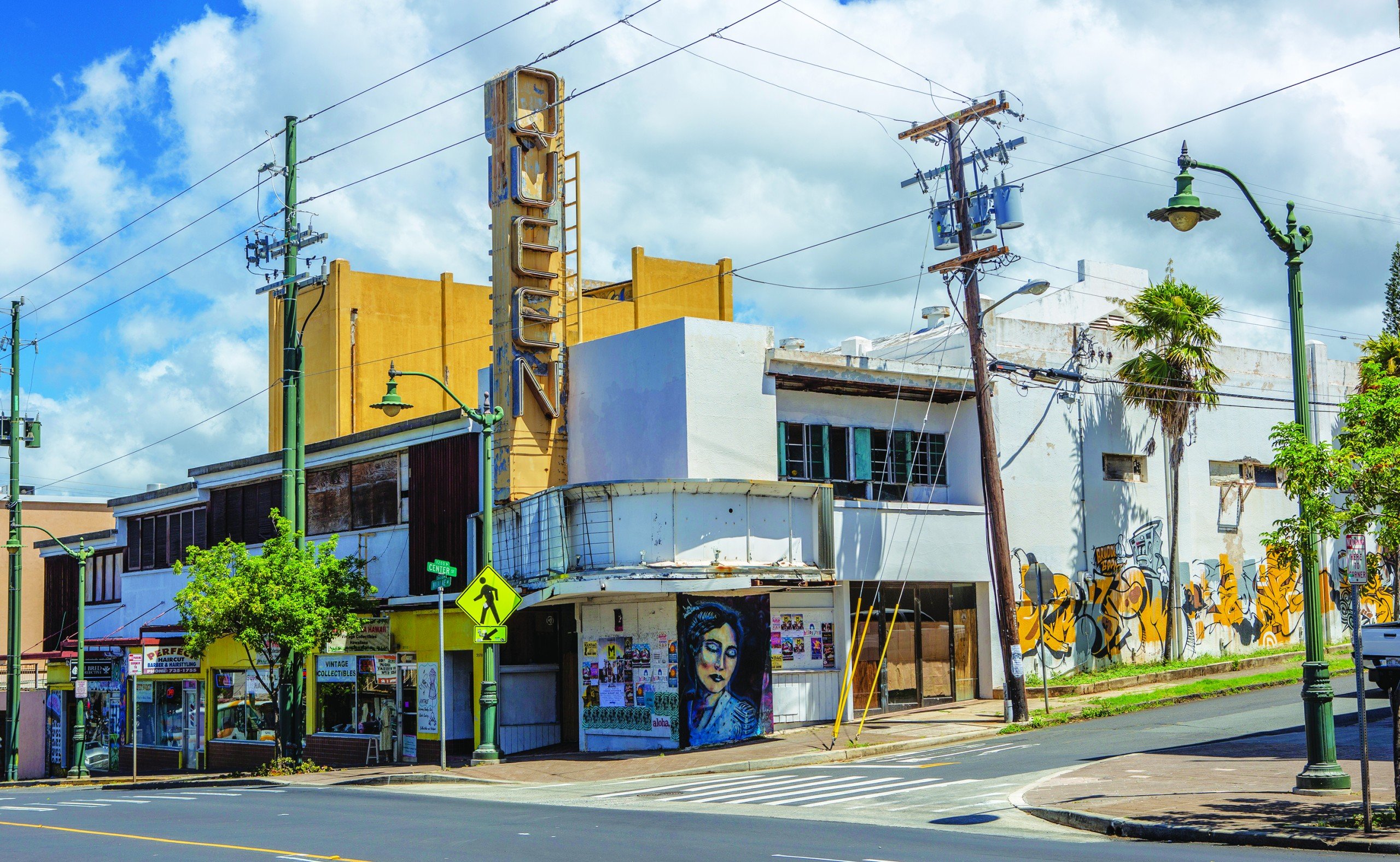
KAKAAKO PUMP STATION
240 Keawe St., Honolulu (Ewa of the former Gold Bond Building)
Built in 1900, the former city pump station is getting a reboot as a resource center for seniors. The Hawaii Community Development Authority, a state agency with control over Kakaako, voted in March to allow the nonprofit Pacific Gateway Center to renovate the building with help from a $1 million grant from the Department of Labor and Industrial Relations, which was approved by the state Legislature.
HCDA executive director Anthony Ching says the center’s staff will help seniors in several ways, including preventing identity fraud. He notes that the station, which has not seen a permanent tenant since 1955, is located along several major bus routes.
An earlier estimate by the HCDA put the cost of a full renovation at $4 million, but Ching says $1 million should be enough to repair the roof, add a bathroom and make other improvements.
Tin Myaing Thein, executive director of the Pacific Gateway Center, says the project comes at a critical time for the building. “It’s falling apart,” she says. “If we wait any longer, it’s going to be too late.”
The center, which provides employment and economic services for immigrants, refugees and low-income residents, plans to renovate the building using the grant and volunteer help, including construction professionals who have already expressed interest in assisting. “There are so many people who want to come in and help,” she says.
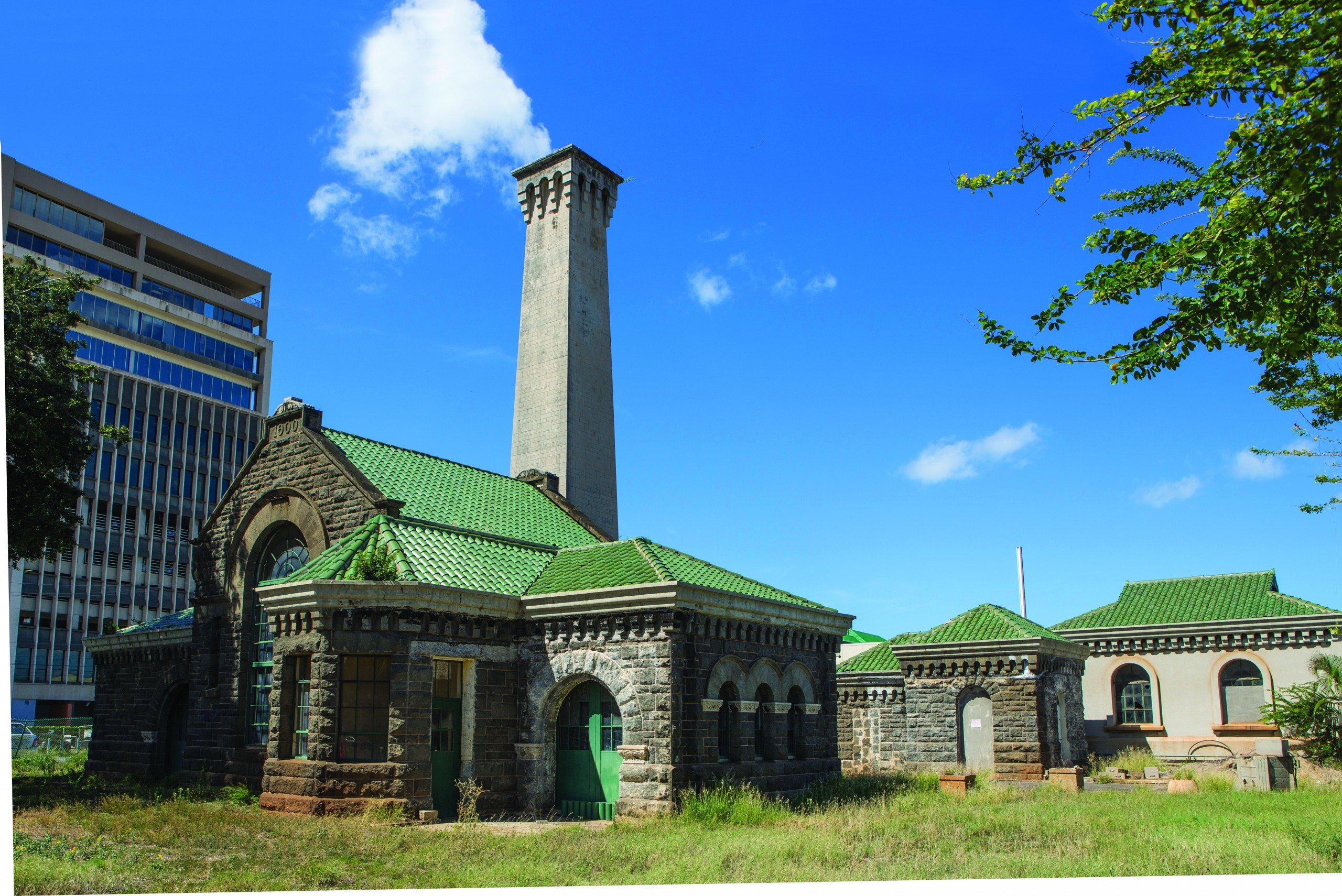
AMERICAN (ROYAL) BREWERY BUILDING
547 Queen St., Honolulu (Ewa of the fire station)
While beer hasn’t been brewed here for over half a century, this turn-of-the-last-century structure will be the new home of the Hawaii Community Development Authority, the state agency that oversees development in Kakaako, Kalealoa and meadowlands in Heeia.
Lindsey Doi, HCDA’s compliance assurance and community outreach officer, says that last year the agency approved a $6 million rehabilitation of the building, which is next door to the Kakaako Fire Station. The red brick structure is stable; it’s the interior that needs work. A wood treatment applied to the inside during a renovation in the mid-1990s left fumes that made occupants dizzy and nauseous, and led the state to sue the contractor. The building also needs a new elevator and air conditioning, according to minutes from a 2013 HCDA meeting.
Kirsten Faulkner, executive director of the Historic Hawaii Foundation, says the building, completed in 1899, is older than most other brick structures in Honolulu, many of which were constructed after a 1900 fire that destroyed large parts of Chinatown and surrounding areas. While some of those buildings were built in a similar style, Faulkner says, the brewery is in a league of its own. “I don’t know any that are this ornate, this large or this decorative,” she says.
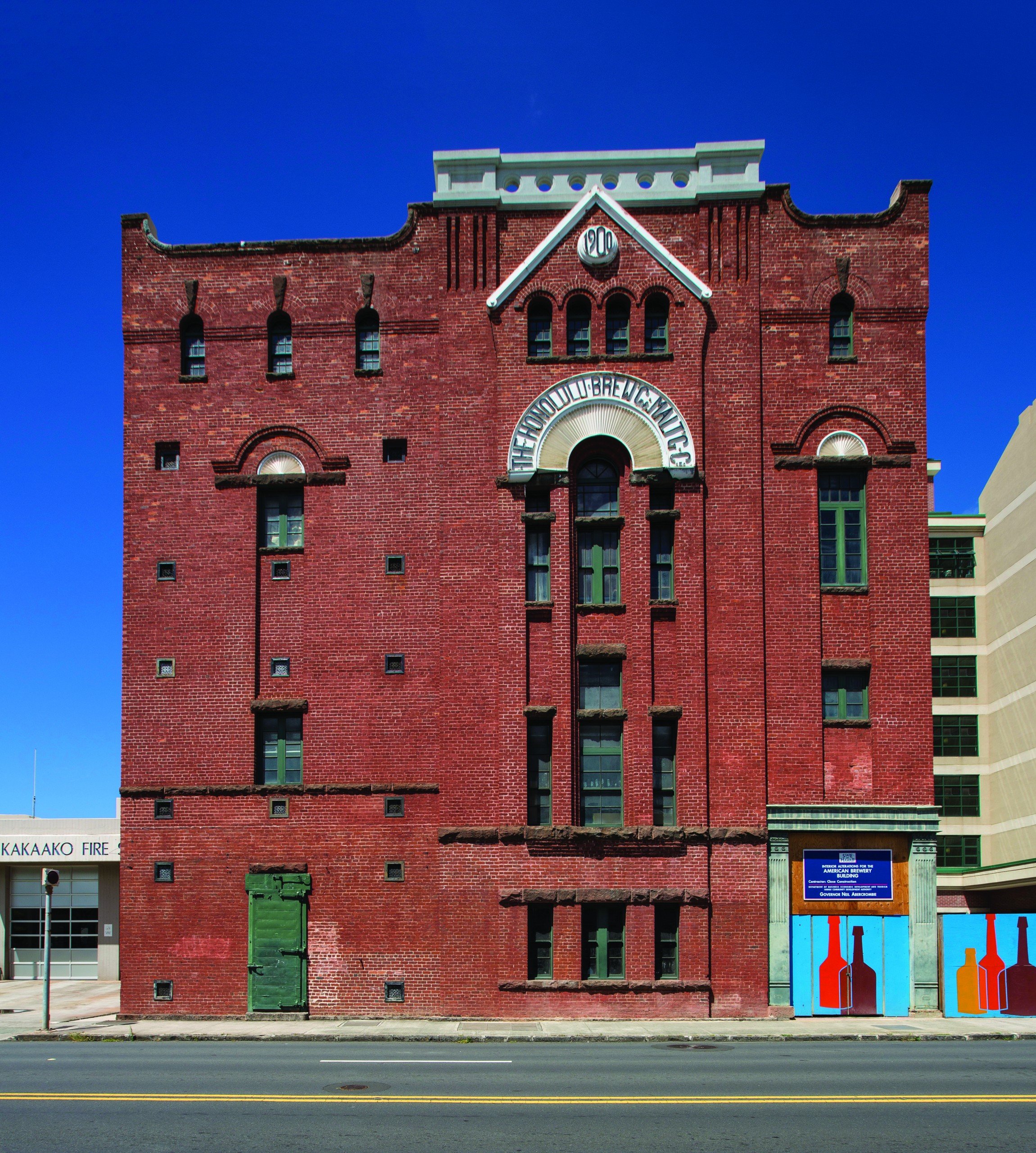
QUEEN EMMA BUILDING
1270 Queen Emma St., Honolulu
(across from the Cathedral of St. Andrew)
Mocked as the “pimple building,” this property has changed hands three times in the last eight years, but none of the plans to renovate the 1960s-era building have come to fruition. The latest proposal would have turned the 12-story building into apartments that would have been marketed to Hawaii Pacific University students, but the future of the building has been in question since 2013, when city records show owner Greg Hatcher was foreclosed upon.
Hatcher had planned to charge $1,500 per student per month for the space.
Massachusetts-based Cottage Capital Partners acquired the building in the foreclosure for $7 million in December 2013, but the company has not announced its plans for the property. Neither Hatcher nor Cottage Capital responded to requests for comment, but a permit application for the dormitory project that Hatcher filed in July 2013 hasn’t been withdrawn and is still being reviewed by the city, according to staff at the Department of Planning and Permitting.
Local architecture firm Fung Associates is handling the work, which is worth $10 million, according to public DPP records.
The building “was an outstanding example of mid-century modern architecture” before renovations removed some features emblematic of the style, such as the metal sun screen that covered the lanai on the Diamond-Head-side façade, Ward says.
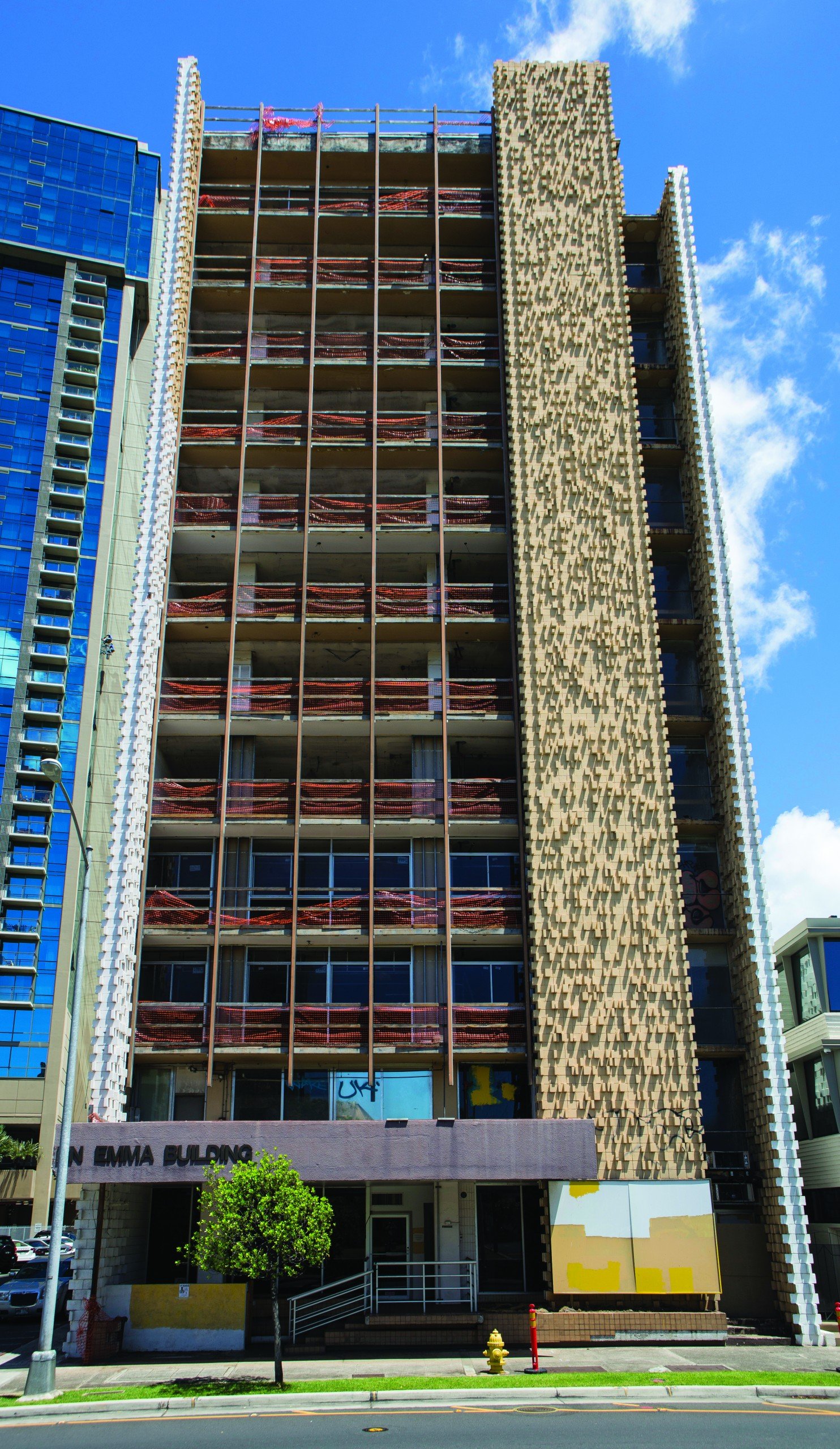
KING KALAKAUA PLAZA
2080 Kalakaua Ave., Honolulu (Ewa of Kalaimoku Street)
With the exception of a subterranean parking garage open to the public, this property hasn’t seen much action since anchor tenant Niketown closed in 2009. In 2012, the owner, Robertson Properties Group, indicated it was considering replacing the retail space with a mixed-use tower, but the property is still advertised for lease.
Why the vacancies? The conventional wisdom is it’s too far from the biggest hotels in Waikiki, so it gets less foot traffic than spots further along Kalakaua Avenue. A broker for Colliers Hawaii, which has listed the 78,113-square-foot property since 2010, would not comment on the building. Robertson Properties did not return any of our multiple requests for comment.
The four-story building was designed by Architects Hawaii Ltd. and the retail space was built in 1997. In addition to Niketown, it once housed the Official All-Star Café and a Banana Republic store.

HILO HOTEL
138 Kinoole St., Hilo (across from Kalakaua Park)
Once the site of a summer residence for Hawaiian royalty, this downtown property has been home for the last half century to a concrete, peach-colored building that was downtown Hilo’s premier hotel until the 1970s. In the past decade, there has been an effort to turn the building into a shelter for the homeless, and Duke Aiona leased part of it during his 2010 gubernatorial campaign.
There was also an effort to turn the lobby and common area into a lunchtime-luau site for cruise-ship passengers, but that fizzled a year ago. The property’s owner, Monika Mallick, didn’t respond to multiple requests for comment about the building’s future. Along with family members, she owns other properties on Hawaii Island, including the site of Hilo’s former Sun Sun Lau Chinese restaurant, which she renovated and began renting to the county in 2011.
Jeffrey Mermel, who serves on the Hilo Downtown Improvement Association’s board of directors, says the property is well situated, but could prove difficult to retrofit because of its aging concrete structure. After years of sitting largely unoccupied, he says, the best option may be to demolish it and erect something new. “It’s a tough nut,” he says. “It’s in a classic location in the best piece of downtown, but it’s got to work economically.”
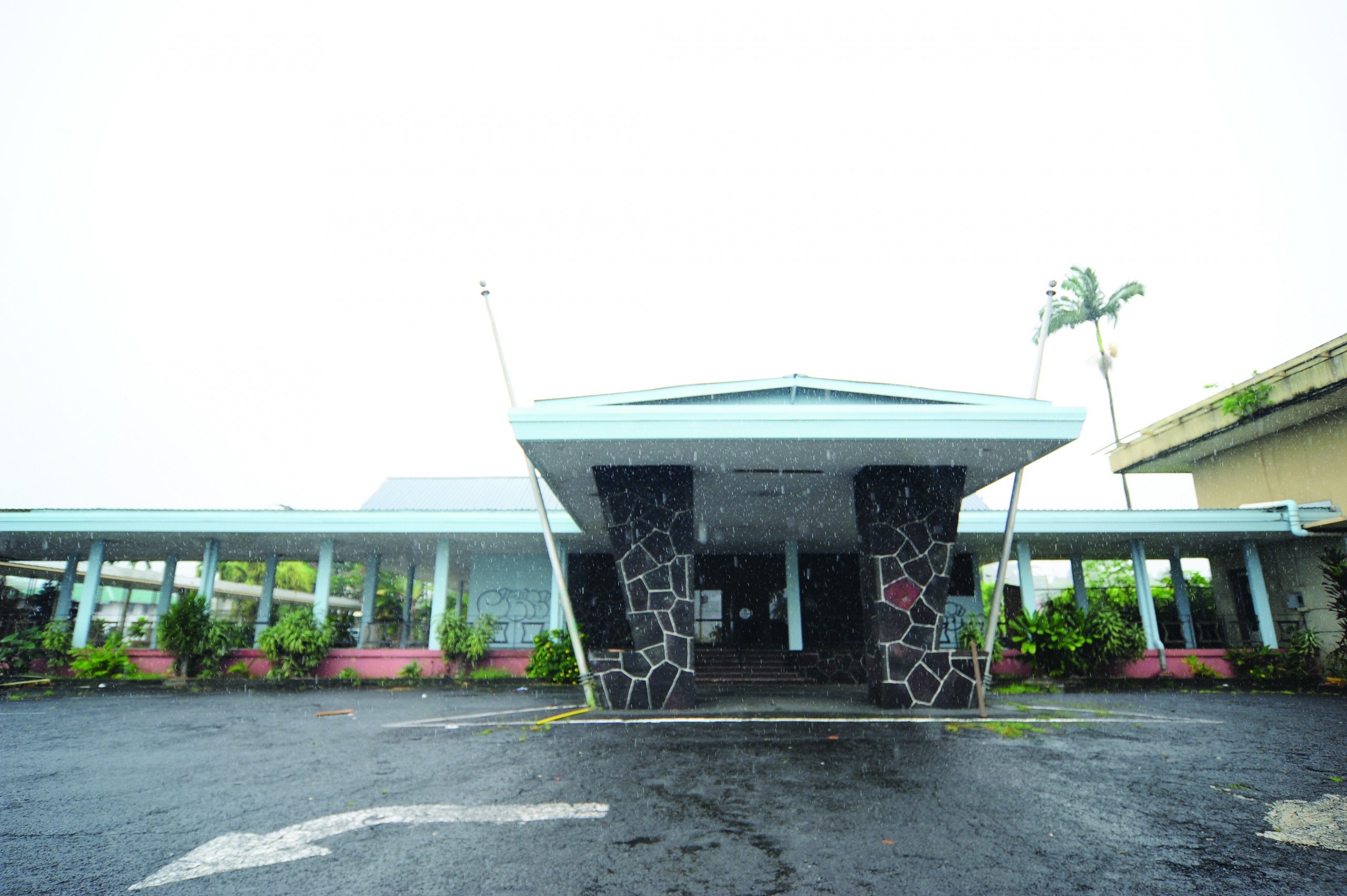
FISHERMAN’S WHARF
1009 Ala Moana, Honolulu (at Kewalo Basin)
The cost of upgrading this restaurant facility to comply with health and safety standards is the main reason the building has been slated for demolition. Shortly after the building’s namesake restaurant closed in 2009, the owners of Pizza Bob’s in Haleiwa took on the lease with the Hawaii Community Development Association, but, within a year, they pulled out, citing concerns about a clause that allowed the state to terminate the lease with one year’s notice.
Now, the Office of Hawaiian Affairs administers the building, since it was part of a 2012 ceded-lands settlement that also gave OHA control of other property along the waterfront in Kakaako.
In a statement, Kawika Burgess, OHA’s chief operating officer, told Hawaii Business that the building has not been properly maintained for a long time, and that bringing it to a usable condition would take too much time, effort and money. “Because of age and neglect, almost every part of the building needs major attention and the building is not close to being operational,” Burgess says, adding that the building will likely be gone “in a few months.”
Another part of the challenge to resurrecting the building as a restaurant, OHA says, would be updating the building to comply with federal and state accessibility regulations. For example, the men’s restroom is on a different floor from the women’s restroom, posing a problem for compliance with the Americans with Disabilities Act.
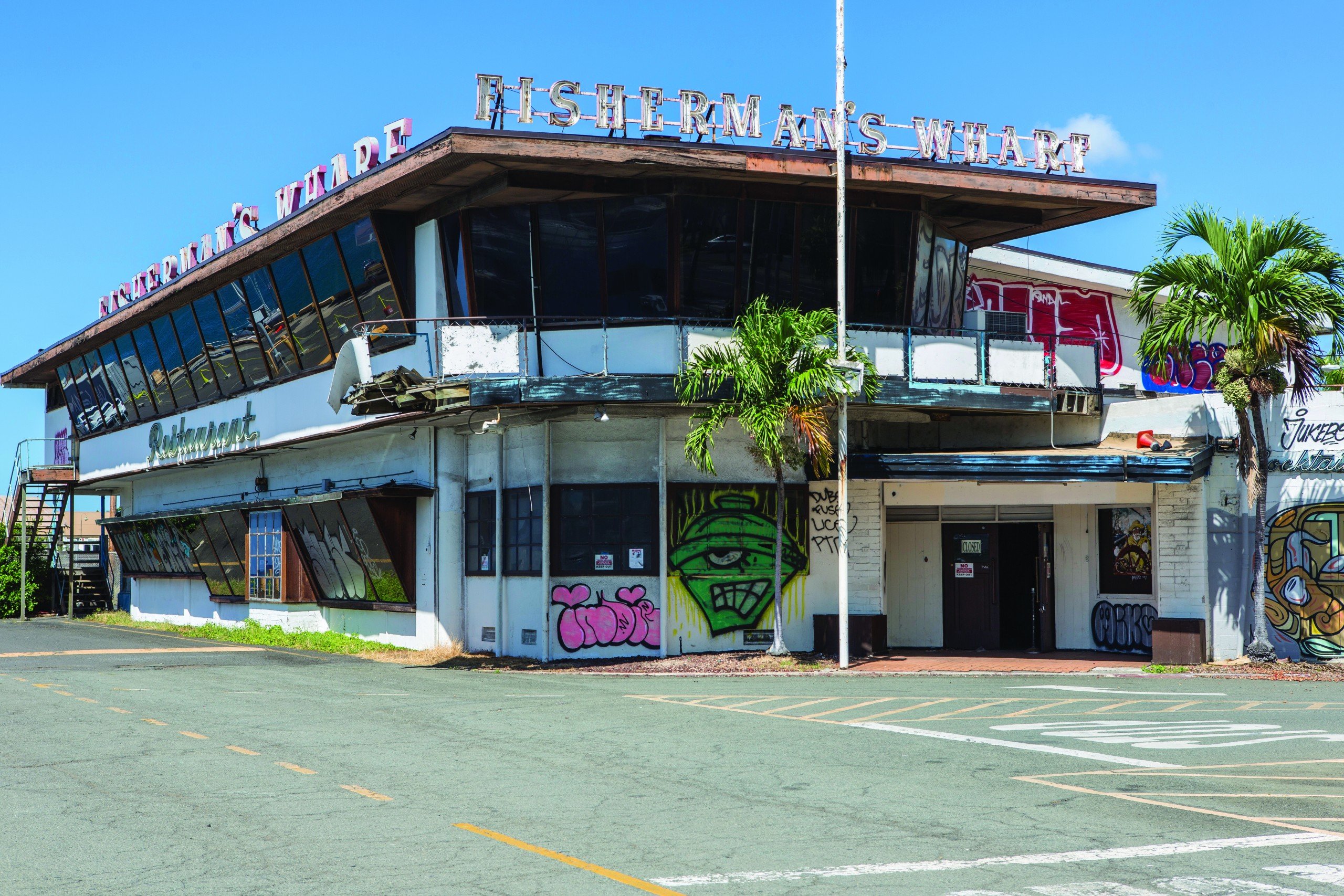
NORIKO’S
47-525 Kamehameha Highway, Kahaluu (across from the Hygienic Store)
Built in 1990, this building used to house Noriko’s, a shop that sold souvenirs and luxury goods to visitors on their way to the Polynesian Cultural Center and other North Shore destinations. It was owned by the Tang family, but that changed in 2002, when Bank of Hawaii foreclosed on the building after a decade-long decline in visitor arrivals from Japan, real estate agent Ron Tom says.
The foreclosure was also preceded by the Tang family’s problems finding someone who could manage the business, Tom adds.
Since then, the 13,978-square-foot building, with an expansive parking lot in front, has sat empty. An effort to revive the store never made it out of bankruptcy court. Only last year did the Lau family, which leased the land to Noriko’s, regain full control over the property and decide to sell the land and the building with Tom as their agent.
The building and land are valued by the city at just under $1.5 million. While he hasn’t begun advertising the property, Tom says he already has several potential buyers, from developers interested in creating retail spaces to churches that need permanent homes.
The two-story building stands out from the single-story structures around it. Given its rural, oceanfront location, Tom says a Hawaii business or organization would be a better fit for the property than a national chain. “I think they can only do it local,” he says.

